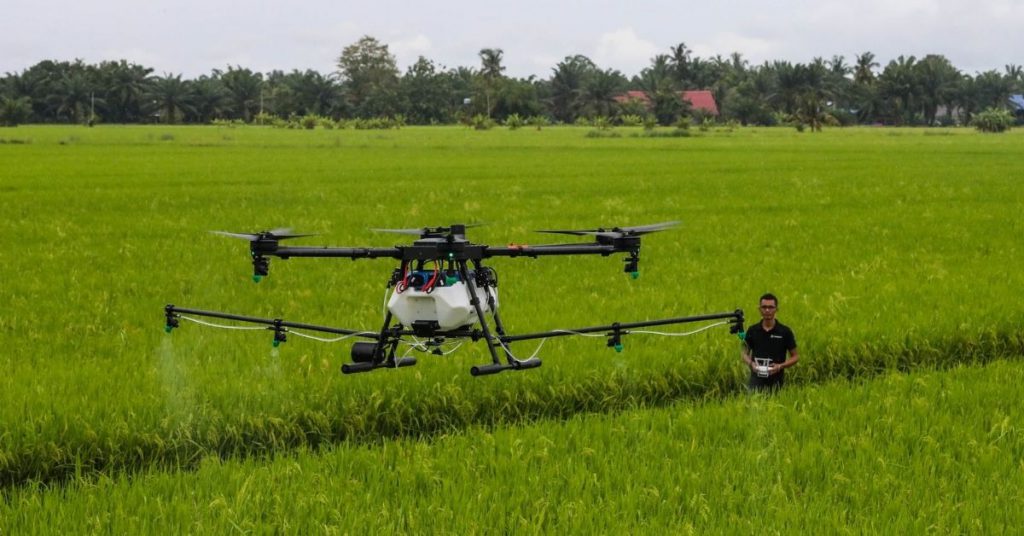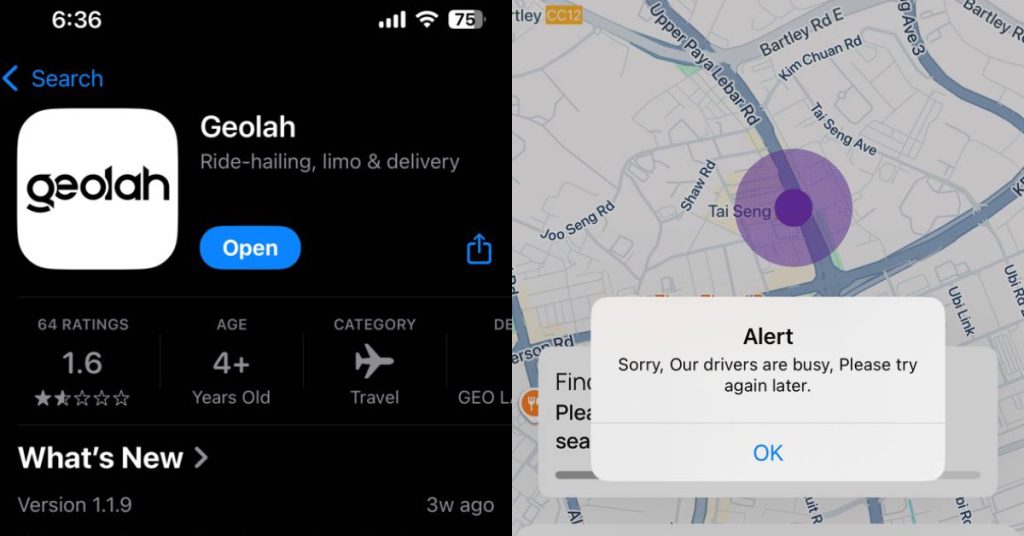Even if you aren’t familiar with the term “agritech”, you may have unknowingly seen examples of it in restaurants, farms, and more. Take for instance, if you’ve dined in farm-to-table restaurants like The Farm Foodcraft in Bangsar South, you’ve actually already encountered agritech in the form of hydroponics.
While incorporating this in a dining concept is unique, there’s more to agritech than just hydroponics. Here’s what you’d find in Malaysia’s agritech scene today with a little digging (pardon the pun).
What Is Agritech?
Simply put, it’s the abbreviation of agricultural technology, which is the collection of scientific techniques that are used to enhance plants, animals and microorganisms, offering benefits to farmers, the environment and consumers, according to Australia’s Biotechnology Organisation.
These techniques are used in plant and animal biotechnology and biofertilisers to protect crops from pests and diseases, reduce the need for pesticides, lower the cost of food production, and provide alternative fuel sources.
Here are some use cases of agritech:
- Smart farming (automated irrigation, vertical farming, hydroponics, etc.);
- Drones and satellites (scanning and surveillance of crops and the field);
- IoT (Internet of Things) based sensors (provide accurate information about the weather, quality and current condition of the soil);
- Blockchain and big data (for consumers to get to know the origin of their produce);
- Biotech (creating crops that can adapt to the environment better than the ordinary ones, develop synthetic fertilisers, etc.);
- Farm maintenance technology (optimising water usage, correctly selecting ripe produce, etc.);
- Production and innovation technology (taking out the middlemen and allowing farming to be closer to urban areas).
Agritech isn’t applied to just agriculture, but also horticulture (gardening, basically) and aquaculture (the rearing of aquatic animals or the cultivation of aquatic plants for food) as well.
An example of agritech’s role in simplifying farming is through using a soil sensor to detect moisture content and moisture flow, which can send back data to a farmer on-demand, hourly, or daily. This saves a farmer time from going out to the field to regularly check on the soil every now and then.
When there’s technology involved like IoT and AI, farming becomes more efficient and less labour-intensive which helps produce more yield for the farmer when compared to traditional farming. This also puts less burden on the farmer to meet the demands of our growing population in the world.
How Important Is The Agriculture Sector In Malaysia?
Agriculture remains to be one of the more important sectors in the country, and as of the latest report in 2019, the agriculture sector is the third-highest GDP contributor (7.1%, which is RM101.5 billion) to the country, standing next to the mining and quarrying sector.
Exports increased from RM114.5 billion in 2018 to RM115.5 in 2019 (0.9% increase), and imports increased from RM93.3 billion in 2018 to RM93.5 billion in 2019 (0.2% increase). The trade balance of this sector rose by 4.1% from RM21.1 billion in 2018 to RM22.0 billion in 2019.
Dictionary Time: Trade balance is the net sum of a country’s exports and imports of goods without taking into account all financial transfers, investments and other financial components. A country’s trade balance is positive (meaning that it registers a surplus) if the value of exports exceeds the value of imports.
Focus-Economics
With agriculture being one of our most important economic sectors, it’s all the more crucial that ways to improve processes are constantly being developed and implemented. But one major issue still stands in our way.
Those Who Need Agritech The Most In Malaysia Can’t Afford It
The group of farmers who need agritech the most are smallholder farmers, who make up the majority of farmers that dominate the local agriculture sector.
They’re the ones who tend to face low productivity and crop yield on top of the lack of manpower in their farms. Additionally, there are also the issues of the lack of ability to manage natural disasters and waste from inadequate farming practices.
On the manpower bit we just touched on, employment in the agriculture sector has actually dropped slightly from 1,570,300 in 2018 to 1,541,100 persons in 2019. Hence, it’s important that agritech steps into the picture to cushion the decline before it hits an all-time low for farmers.
However, agritech like smart sensors and drones aren’t cheap. For instance, drones that provide imagery of field conditions can cost around $1,000 (approx. RM4,145) each, without taking the salary of the hired talent to operate one into consideration. Currently, this is an unrealistic price for many smallholder farmers, if they’re expected to fork the money out of their own pockets.
“We would love to get our hands on automated hardware such as a robotic harvester, which would cut down our labour costs, or a weather station device that can tell us the best time for planting, fertilising and irrigation based on historical data. But all this is just too expensive now,” a local farmer, Markus Chin of Shinnou Farms, told Al Jazeera in 2019.
Growing The Agritech Sector In Malaysia
Over the years, several initiatives have been undertaken by public and private sectors in Malaysia to drive the growth of agritech through funding startups with agritech solutions, providing micro-financing schemes for farmers to adopt agritech, and more.
In 2018, the Malaysian Digital Economy Corporation (MDEC) initiated a pilot project to spur the yield and quality of crops utilising the latest technologies, via a public-private partnership with the Pertubuhan Peladang Kawasan Kuala Langat (PPKKL).
It has seen farmers adopting an Internet of Things (IoT)-enabled fertigation (combining fertilisation and irrigation) system that helped them reduce monthly fertiliser usage by 20%, lower monthly manpower requirements by 25%, and increase the overall quality of yield (Grade A chillies) by up to 90%.
In 2019, the Malaysian Global Innovation & Creativity Centre (MaGIC) conducted a boot camp for agritech startups with a demo day at the end of the 10-day event during the Global AgriTech Summit.
3 agritech startups that emerged as winners of the bootcamp were:
- Sayur.Farm: Developing a FitBit-like device that serves as a farming assistant that can update the current condition of the crops and its environment, collating info via artificial intelligence, and data visualisation to provide yield forecasts, plant health, recommended prescriptions, data sharing, insights, profit analysis, and yield analysis;
- Life Origin: Producing black soldier fly larvae using organic waste and turning them into livestock, animal, and pet food;
- FarmExchange (now rebranded to Kapitani): A closed marketplace where farmers can get loans directly for their required equipment. Farmers can also receive a credit score, and lenders can get a transparent view of the farmer’s requirements, proposed ROI, and timeline.
However, it seems that Sayur.Farm has not been recently active. A few more local agritech startups that are currently active include:
- Braintree Technologies Sdn Bhd: Uses drones to do tree counting and spraying, plantation mapping, infestation mapping, etc.;
- TanaLink EARS: Uses technology to provide real-time data and monitoring of their farm for theft, harvesting, fertilisation coverage, wildlife presence, soil sensors, etc.;
- plantOS: Uses a fertigation system that can detect diseases in advance, works as a soil sensor, and can automatically fertilise your crops accordingly, which reduces nutrients wastage;
- Fefifo: Provides smallholder farmers and young unemployed agri-graduates with ready-to-farm spaces and technologies to kickstart a modern farming business with guaranteed off-take;
- Nutribah: Uses an IoT-based smart-farming system and has their own fleet of riders to cut out the middlemen and deliver their produce straight to consumers.
Although there aren’t too many established local agritech startups in the country yet, Dzuleira Abu Bakar, the CEO of MaGIC noted that agriculture is changing with the pace of change quickening. While this has been underfunded and not as popular of an industry in the past, it’s quickly turning around. With these technological advancements in agriculture as well, the industry is starting to become more inclusive and attractive to the younger generation.
Even Petronas has forayed into the agritech ecosystem by becoming a VC for Braintree Technologies last year, under Petronas Ventures and in line with the Petronas’ Sustainability Agenda and the United Nations’ Sustainable Development Goals, which further signals the potential of agritech in Malaysia.
Just last week, MDEC and CIMB Islamic signed an MoU on extending an extensive micro-financing programme with an allocation of RM10 million as an initial funding package to catalyse Digital Agriculture Technology (Digital Agtech) in Malaysia. As the programme progresses, this allocation has the potential to be increased to RM25 million.
MDEC’s ongoing eLadang programme has also benefitted 548 participants as of December 2019, with 78 farmers utilising digital farming technology, leading to a 20% increase in productivity and a 30% income increment as well as a reduction in operating costs by 30%.
With the MoU contributing to the growing use of technology in agriculture, it’s estimated that there will be a 30% increase in job opportunities created by 2025 in this sector. At the same time, more youths will be driven to take part, who will be needed to manage and run the innovative technologies.
- You can read more Agritech-related articles we’ve covered here.
Featured Image Credit: Poladrone via Tech for Impact











